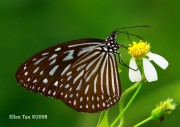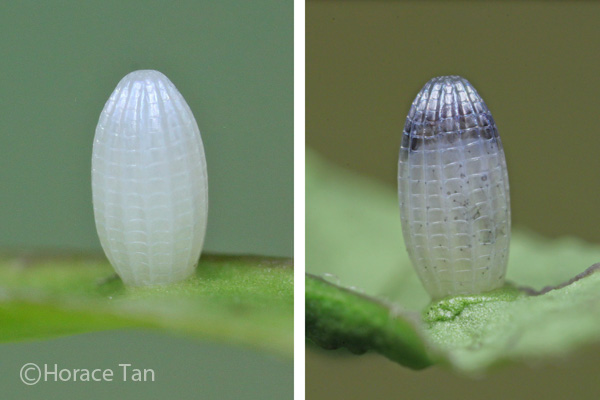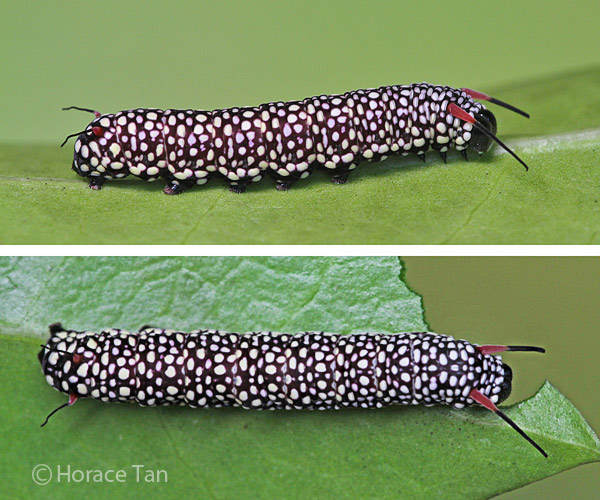Ideopsis vulgaris macrina
Blue Glassy Tiger
| Family: | Nymphalidae |
| Subfamily: | Danainae |
| Genus | Ideopsis |
| Species: | vulgaris |
| Subspecies: | macrina |
| Common Name: | Blue Glassy Tiger |
| Wingspan: | 70-80 mm |
| Status: | Common |
| Life History: | complete |
| Extant in countries: | •Singapore |
| Hostplants: |
Description
The presence of a transverse black bar in the forewing cell distinguishes the Blue Glassy Tiger from the Dark Glassy Tiger.
Habitat & Habits
The Blue Glassy Tiger shares the same habitats with the Dark Glassy Tiger (Parantica agleoides). When the two species fly together it is not easy to separate them. However, when the butterflies stop to feed or to rest, the presence of a transverse black bar in the forewing cell distinguishes the Blue Glassy Tiger from the Dark Glassy Tiger.
This species is common in Singapore, particularly in the coastal mangrove areas. The butterflies are also attracted to the partially dried plants of Heliotropium indicum, usually turning up within an hour or two after the plants are hung up in the forest reserves.
Other Observations
To be detailed.
Early Stages
The Blue Glassy Tiger feeds on a lactiferous species of Asclepiadaceae, particularly Gymnema spp. and is thus distasteful to birds.
Further Reading
To be detailed.

 Bobby Mun.jpg)
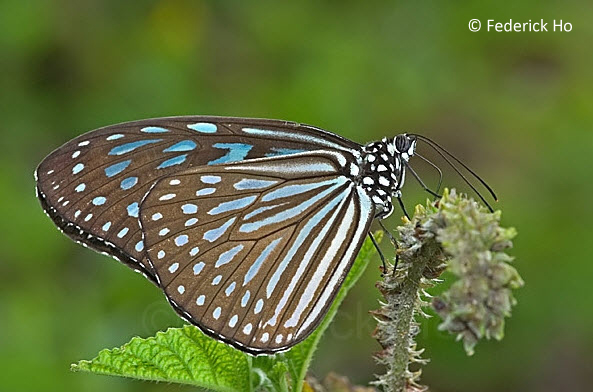
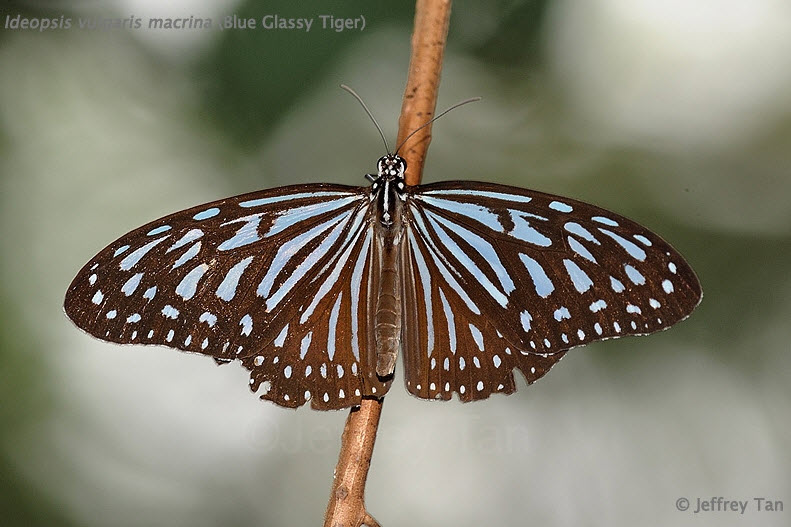
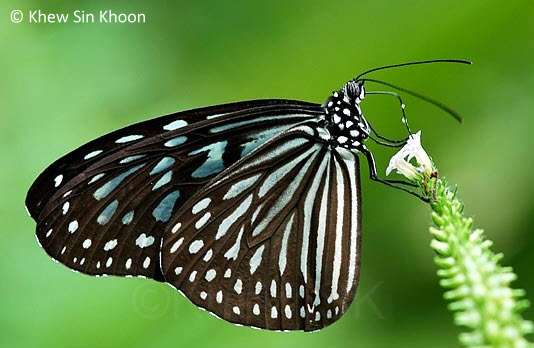
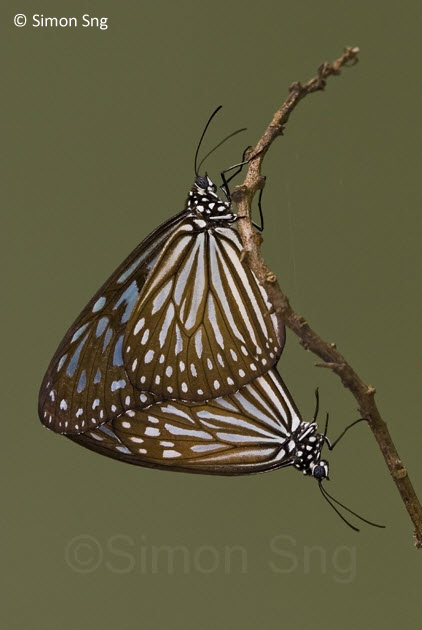
 Bobby Mun.jpg)




.JPG)
